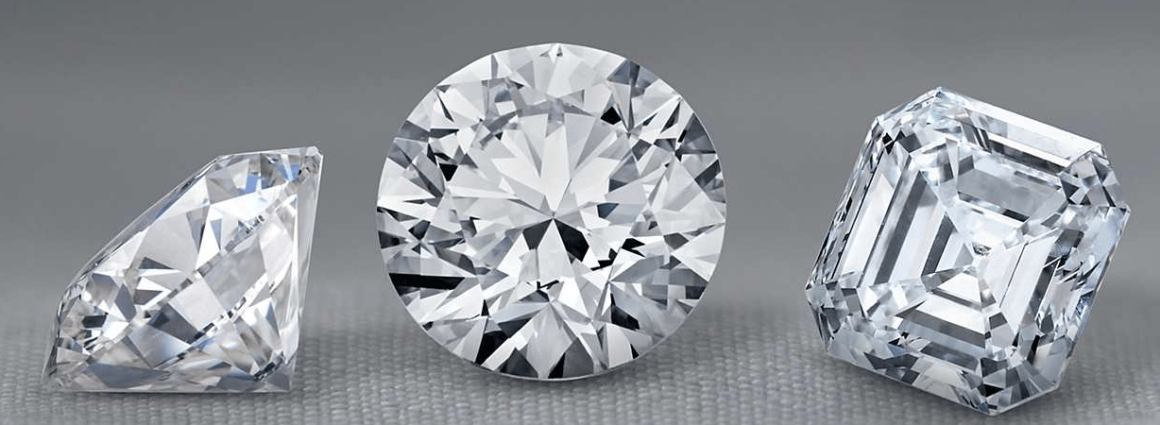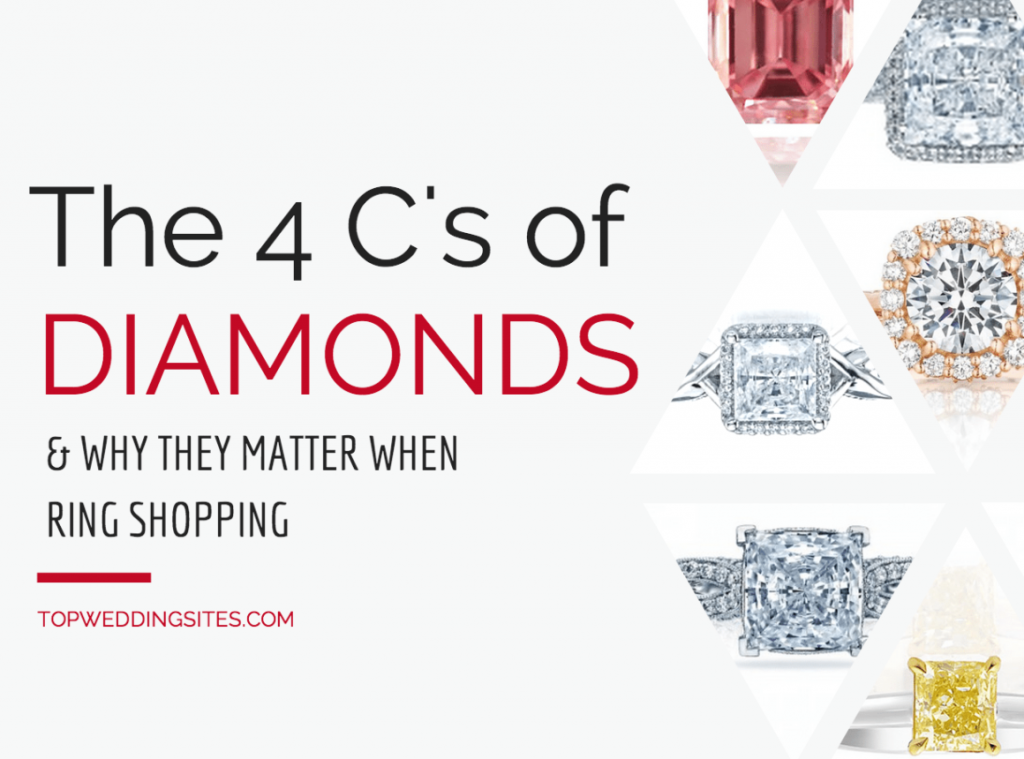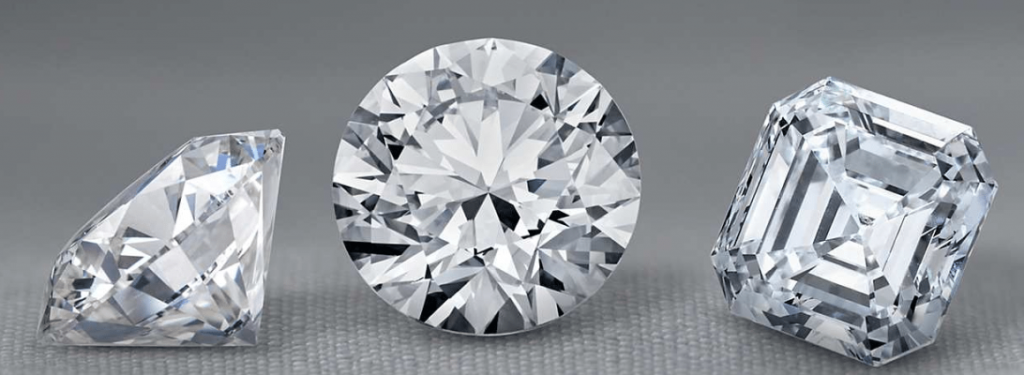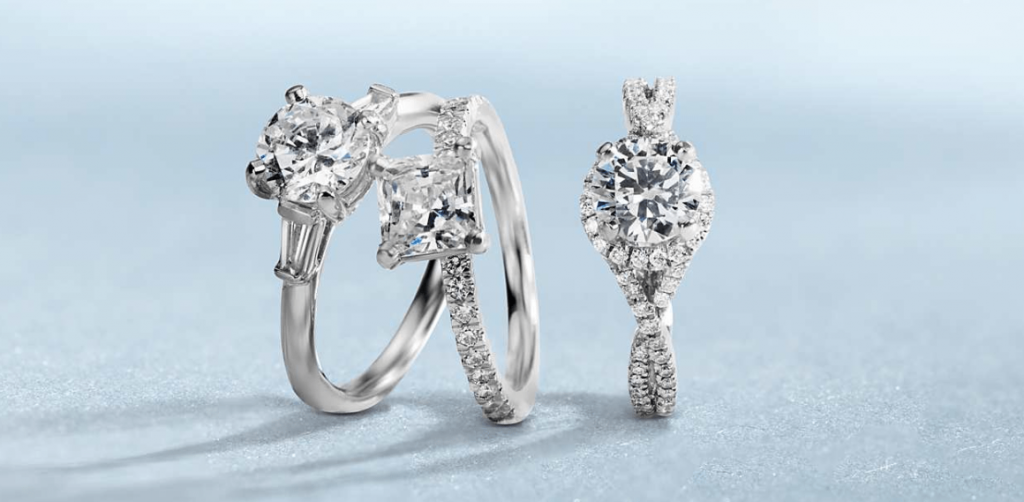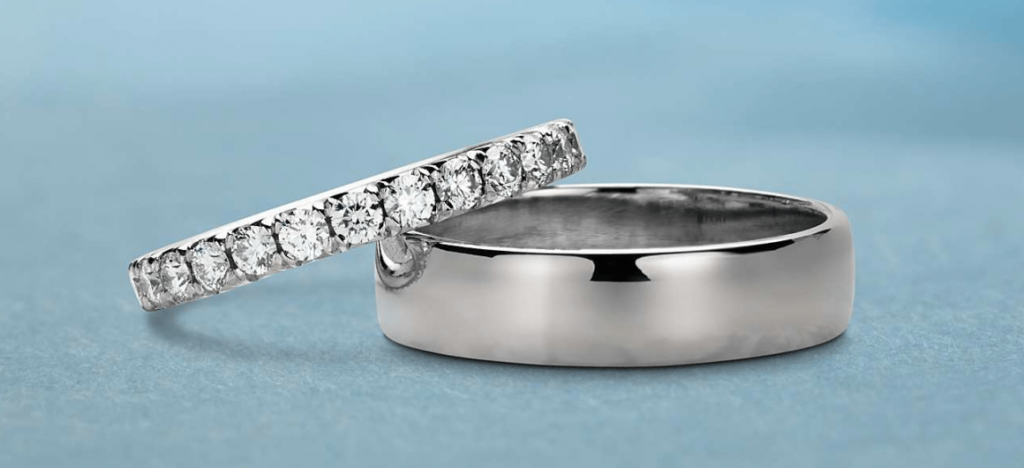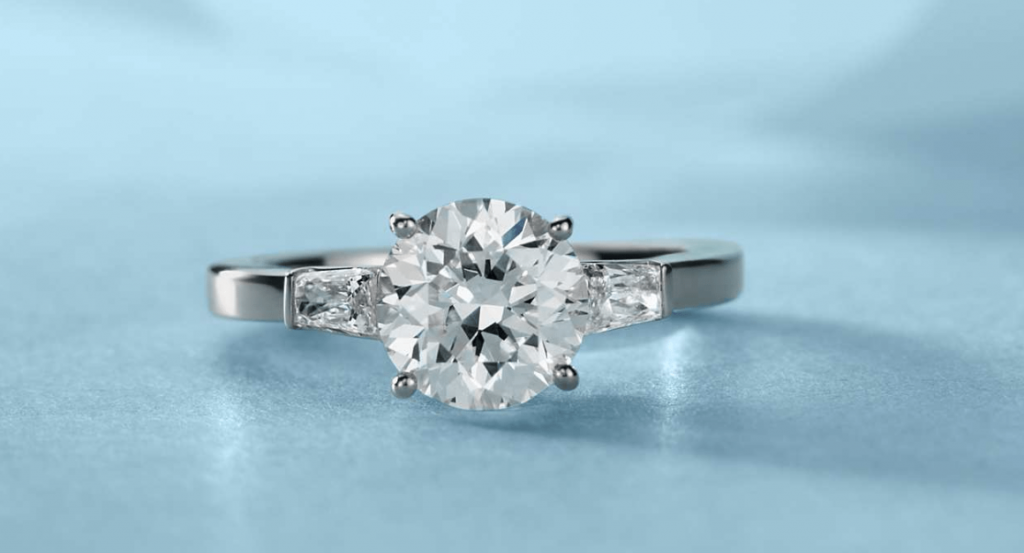You’ve met the love of your life and are ready to pop the question, but before you rush out to buy a ring, take the time to do a bit of research. If you would like the proposal and ring to be a complete surprise, you will need to consider your beloved’s taste or spend some time observing the type of jewelry she wears.
If she wears a lot of yellow gold, select an engagement ring with a yellow gold band to match it. If she wears a lot of silvery-colored jewelry, go with a band of white gold or platinum. If her taste is more towards simple pieces, or she wears very little jewelry, you may want to purchase a solitaire (a ring with only one diamond) or a ring with two very small side stones. If she likes larger or bold pieces of jewelry or is into a lot of flash and sparkle, you may want to get a ring with side stones, even colored ones, and pave diamonds (small diamond pieces) covering the band.
It is not wrong to look at rings together. When we were dating, my husband pulled me into a jewelry store one day and wanted me to show him rings I liked, so he could get a feel for what to buy later on his own. Yes, it may take away some of the surprise, but if you are ready to get married, generally so is she, so why not ensure she gets the exact thing she wants?
There are a few other things to consider when purchasing a diamond engagement ring, and the primary issues are the four Cs—color, cut, clarity, and carat.
Color: The color of a diamond actually refers to its colorlessness, unless of course you are intentionally buying a colored diamond, such as a yellow or pink one. The level of color in a traditional white diamond is rated with a letter, D through Z, with D indicating perfectly white and Z a yellowish or brownish tint. A diamond rated E through K will have nearly no color at all, at least no color that will be visible to the average person once the diamond is mounted in a ring. Once you go much past K, it is possible that you might notice a slight yellowish tint to the diamond if you are holding the ring against a white background.
Cut: The cut refers to both the shape of the diamond (round, oval, pear, rectangular, etc.) and to the number of facets and the way the diamond was designed or cut by the jeweler. The particular cut of a diamond is what affects its sparkle. The ideal cut will let in and reflect the most light. A “brilliant cut” diamond is the most popular, as it yields the most fire and sparkle as you shift the ring in the light. A diamond can have a brilliant cut and be round or another shape (I have a rectangular brilliant-cut diamond in my ring). Princess cut is another popular choice as well and is typically a perfect square.
Clarity: The clarity rating of a diamond depends on the number and size of tiny, natural imperfections within or on the surface of the diamond. Here is a list of the clarity grades for diamonds, according to the Gemological Institute of America (GIA):
- Flawless (FL) – No inclusions or blemishes are visible to a skilled grader using 10× magnification
- Internally Flawless (IF) – No inclusions and only blemishes are visible to a skilled grader using 10× magnification
- Very, Very Slightly Included (VVS1 and VVS2) – Inclusions are difficult for a skilled grader to see under 10× magnification
- Very Slightly Included (VS1 and VS2) – Inclusions are clearly visible under 10× magnification but can be characterized as minor
- Slightly Included (SI1 and SI2) – Inclusions are noticeable to a skilled grader using 10× magnification
- Included (I1, I2, and I3) – Inclusions are obvious under 10× magnification and may affect transparency and brilliance. They may also be visible to the naked eye.
Carat: Carat, not to be confused with “karat,” which refers to gold’s purity, or “carrot,” which refers to an orange vegetable, is the weight of a diamond. The heavier the diamond, the larger it is. Large diamonds are expensive, so if money is a big concern, and you know your beloved would like a large stone, look for one with a lower clarity or color rating. Some people would be perfectly happy with a smaller stone of exceptional clarity and color.
Cost: Though not technically one of the four Cs diamonds are graded on, it is an important issue for most people. You may have heard the phrase “two months’ salary” tossed around as a recommendation for what you should spend on a ring. That can be an extreme hardship for some, and deeply in debt is not a good way to start a marriage. A number of factors can affect the price of a ring, the four Cs being some of them. The particular store you purchase your ring in will also greatly affect the price. Purchasing a ring online can be a very smart option, as an online retailer does not have to build the cost of operating a store and paying employees into the ring. You can always start out with a smaller, less expensive ring and save up for a spectacular upgrade in the future.
A little observation and research can go a long way towards ensuring you pick something your beloved will cherish forever.


